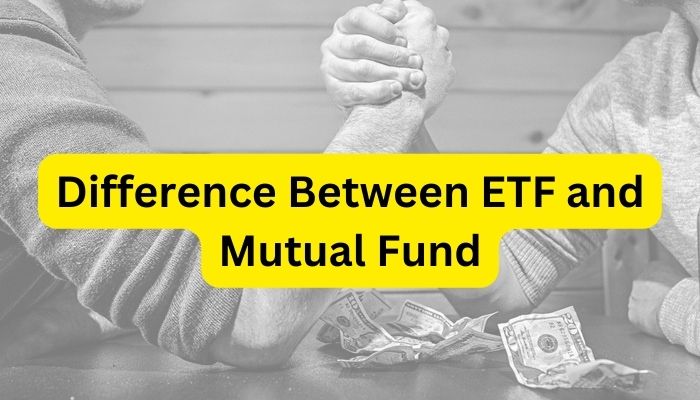What is the Difference Between ETF and Mutual Fund? – Mutual funds and exchange-traded funds (ETF) can both offer many benefits for your investment portfolio, including instant diversification at a low cost.
-
ETFs tend to be passively managed whereas mutual funds tend to be actively managed.
-
ETF fees are often lower than mutual fund fees.
-
ETFs trade throughout the day. Mutual funds are priced and traded at the end of each trading day.
Difference Between ETF and Mutual Fund?
Expense ratios:
An expense ratio indicates how much investors pay each year, as a percentage of the amount invested, to own a fund.
Passively managed ETFs are relatively inexpensive. Some carry expense ratios as low as 0.03%, meaning investors pay just $0.30 per year for every $1,000 they invest. This is considerably lower than actively managed funds. In 2021, the average annual expense ratio of actively managed funds was 0.60%, compared to an average of 0.12% for passively managed funds, which includes index funds.
But don’t assume ETFs are always the cheapest option on the menu. It’s worth comparing ETFs and mutual funds when considering your investment options.
How they’re traded:
ETFs usually track an index, but they’re index funds with a twist: They’re traded throughout the day like stocks, with their prices based on supply and demand. On the other hand, traditional mutual funds, even those based on an index, are priced and traded at the end of each trading day.
The stock-like trading structure of ETFs also means that when you buy or sell, you might have to pay a commission. However, this is becoming increasingly uncommon as more and more major brokerages do away with commission fees. While that’s great news for ETF buyers, it’s important to remember that most brokers still require you to hold an ETF for a certain number of days, or they charge you a fee. ETFs aren’t normally intended for day-trading.
Whether you’re buying a mutual fund or an ETF, you can invest in a diverse selection of assets.
| Feature | Mutual funds | ETFs |
|---|---|---|
| Type of assets | Stocks, bonds, gold, etc. | Stocks, bonds, gold, etc. |
| Type of fund management | More actively invested | More passively invested |
| Fund expense ratios | Higher | Lower |
| Brokerage commissions | Often $0, but may range up to $50 | Typically $0 |
| Sales commissions (loads) | Often none, but sometimes 1 or 2 percent | None |
| When you can trade | Priced at the end of the trading day | Can be purchased throughout the trading day |
| Tax efficiency | Lower | Higher |
Which has better returns?
Take a look at the five-year performance of the oldest and one of the most popular ETFs, SPDR S&P 500 ETF Trust, traded under the ticker SPY. As you can see below it had nearly identical returns compared with the S&P 500.
The reason it doesn’t have the same return as the S&P 500 is a result of slightly different sector allocations. For instance, 26.93% of the SPY comprises information technology assets compared with 26.92% for the S&P 500. The expense ratio for SPY is 0.0945%.
How to pick which is right for you:
The decision mainly boils down to cost and control.
ETFs typically charge lower fees and have smaller minimum investments than mutual funds. Additionally, because of the way mutual funds are structured, they tend to generate higher taxes than ETFs while you hold them.
With mutual funds, you forfeit a degree of control in terms of when you can buy or sell them and at what price. But you get the benefit of having a team of experts to make some of those decisions.

